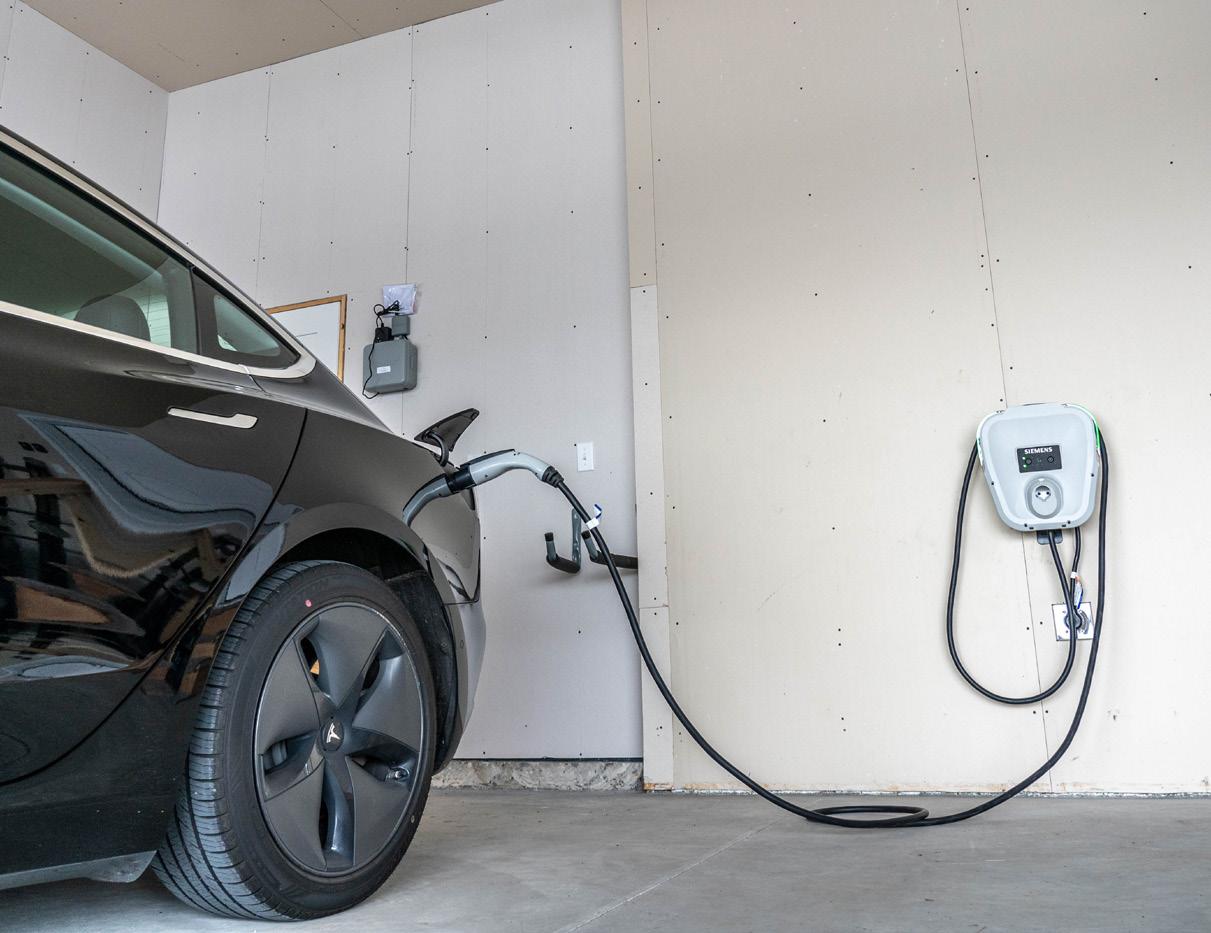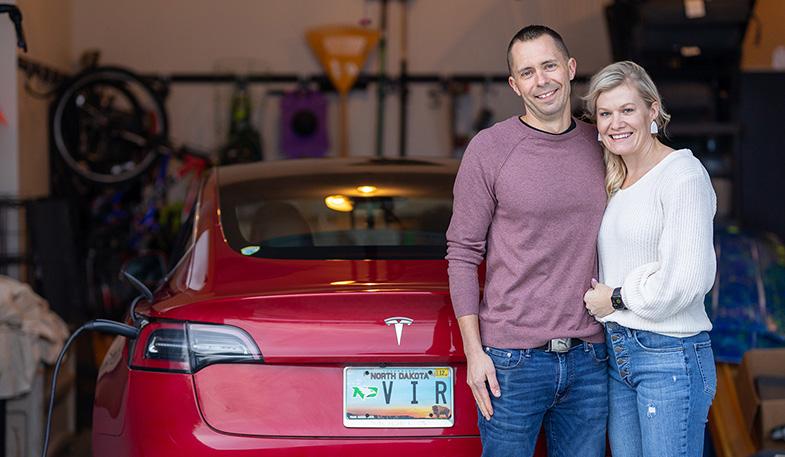
5 minute read
Electric Vehicle Charging
Electric Vehicles
ELECTRIC VEHICLE CHARGING
The future of transportation is electric. Adding an electric vehicle (EV) to your garage can save you money, help you become more environmentally responsible and simply give you a better driving experience. Plus, charging at home is easy and inexpensive – and your utility will help you get started.
Installing a Level 2 home charger is much like installing the wiring for a clothes dryer or other heavy appliance – it needs a 240-volt source. Most homeowners hire an electrician for this, and it can usually be done in a few hours. A Level 2 charger can refill a standard 60-kW EV battery in about 6-8 hours. That means you can plug in, go to sleep and have a fully charged car in the morning.
Your utility may offer rebates for the installation of home charging equipment (often $500-$1,000) on the off-peak program. That helps you take advantage of a super-low electric rate – less expensive than traveling on gas. In exchange for the lower rate of the offpeak program, charging is limited to certain hours, typically overnight.
CHARGING OPTIONS
Level 1 Level 2 Level 3 (DC Fast Charge)
Electric Requirements
Level 1: Plugs into a standard 120-volt outlet
Level 2: Uses a 240-volt charging station installed at home or in a public space
Level 3: Requires utility involvement, usually only found in public along major corridors
Charging Speed
Level 1: Around 5 miles of range per hour (36 hours for depleted standard battery)
Level 2: Around 25 miles of range per hour (6-8 hours for depleted standard battery)
Level 3: Around 100 miles of range or more per hour (time dependent on battery depletion level)
Cost to Charge
Level 1: Standard electric rate
Level 2: Qualifies for reduced off-peak rate
Level 3: For drivers, may be free or charge a usage fee
BENEFITS
SAVINGS – At the standard electric rate, most electric vehicles can be fully recharged at home for about $7. For consumers who participate in the off-peak charging program, it costs about 65 cents to drive an electric vehicle the same distance that an average car can go on a gallon of gasoline.
LESS MAINTENANCE – Electric vehicles do not require oil changes, because no oil is used to run the engine. They do not require air filters, spark plugs, timing belts or many other parts that need occasional replacement in a gasoline car.
SMOOTH RIDE – EV motors are nearly silent and provide smooth (and incredibly fast) acceleration, as there are no shifting gears. With a heavy battery creating a low center of gravity, EVs handle curves and turns like a dream.
NO EMISSIONS – EVs release no tailpipe emissions, creating cleaner air in your community.
ELECTRIC VEHICLE CHARGING
The DeFoes’ story
When Adam and Britani DeFoe moved their family from Nebraska to West Fargo, N.D., more than three years ago, they had a lot to figure out. Adam was starting a new physician interventional radiologist job at Essentia Health, their four kids would be experiencing a new community and they were building a new house from afar.
But one thing was easy to figure out. Adam had a Tesla Model 3 on preorder, and he wanted a way to charge it quickly at home.
“Our builder just asked me about it. He gave me the option of the off-peak meter for the charger, and he said, ‘You’ll save a lot.’ Right away I said yes – put that in!” Adam said with a laugh.
The DeFoes, Cass County Electric Cooperative members, have racked up the savings by charging their electric vehicle (EV) on the off-peak program, which offers them a reduced electric rate for charging the car during low-demand times of day – often overnight. Additionally, a charger rebate is offered to members who enroll in the off-peak program. Adam simply plugs into the 240-volt system when he gets home, and the car is programmed to begin the charging process at the set offpeak time. Even if the battery is nearly depleted, he has a full charge by the time he needs to leave for the hospital.
“Especially compared to paying for gasoline, charging the car is pennies. It takes very little electricity to make this car get to work and back,” Adam said. “You definitely see the cost savings in the long run. Electric vehicles are great, especially if you are doing a lot of around-the-town commuting.”

Inexpensive “fuel ups” are just a small reason Adam loves his EV. He hasn’t had to bring the car in for maintenance the entire three years he’s had it (no oil, no belts, no problems), he likes that it is American made and environmentally friendly, and he can’t get enough of the high-tech features and app capabilities.
He’s most charged up about one detail in particular.
“They are super fun to drive. The acceleration…” he said with a pause. “You can’t beat it.”
The DeFoes have become fast advocates of EVs and are thrilled to see fast charging stations and Tesla Superchargers pop up in their neighborhood and towns around the region. Britani drives the EV whenever she has the chance, and the couple certainly envisions plug-in fandom continuing through their next generation.
“My oldest will be 11 soon, so I’m thinking it might be passed on to her, because the safety ratings on this thing are amazing,” Adam said.
– Adam DeFoe






